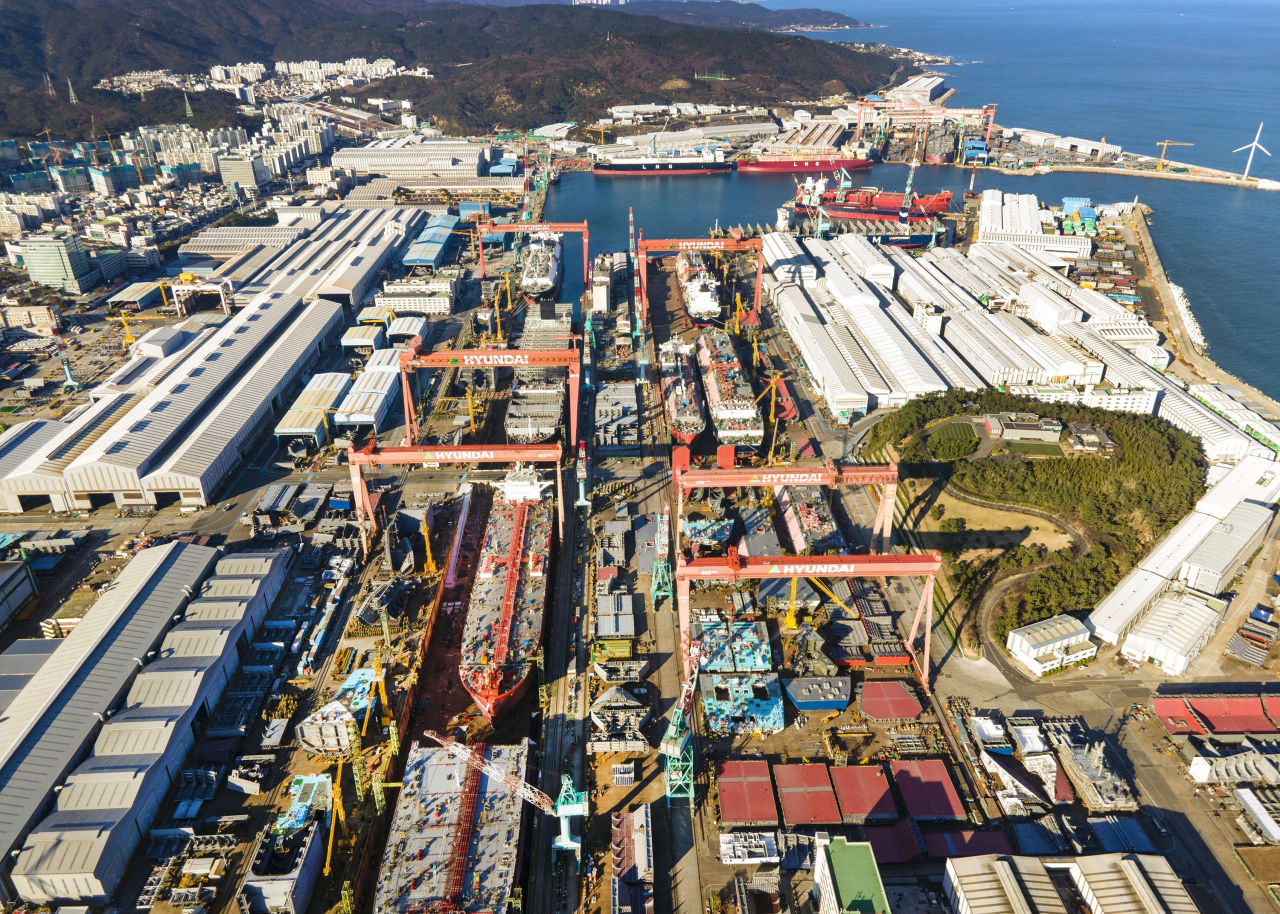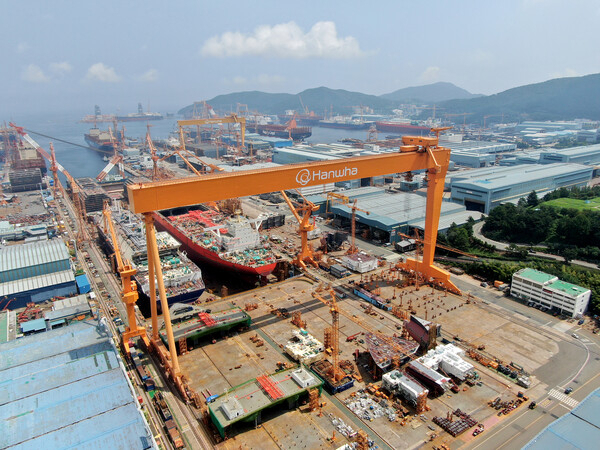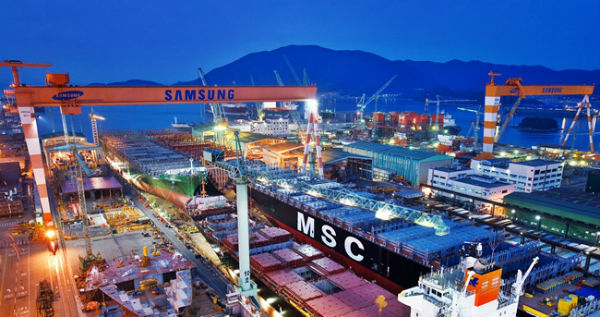 |
HD Hyundai Heavy Industries' shipyard in Ulsan (HD Hyundai) |
South Korea’s leading shipbuilders have been scoring massive order after order all this year, welcoming the revival of the shipbuilding industry. Despite the upbeat numbers on paper, they are facing the daunting task of securing a skilled workforce capable of carrying out difficult tasks in the long term.
Clarksons Research, a global shipping and shipbuilding analysis firm based in the United Kingdom, measured the Newbuilding Price Index (NPI) at 173 points as of August. The NPI indicates the price of ships with a starting point of 100 points, which was set in 1998 based on the average price of ships then. After almost 15 years of recession, the NPI finally recovered and came close to the 191.5 points logged in August 2008 when the booming global shipping industry was at its peak.
The Korean shipbuilders’ backlog reached 38.8 million compensated gross tons or CGT, which refers to the amount of work required to build ships, in the first half of this year, the most in 12 years.
With the high demand, top shipbuilders such as HD Korea Shipbuilding & Offshore Engineering, Samsung Heavy Industries and Hanwha Ocean, formerly known as Daewoo Shipbuilding & Maritime Engineering, began scrambling to fill in the empty positions left by the layoffs during the prolonged slump.
The Korea Offshore & Shipbuilding Association forecast earlier that the country’s shipbuilding industry will face a shortage of about 14,000 workers by the end of this year. The association also predicted that 45,000 additional workers would be necessary to deliver the secured orders.
To address the shortfall, the Ministry of Trade, Industry and Energy and the Ministry of Justice took various measures such as shortening the period it takes for foreign workers to obtain working visas and increasing the allowed quota of foreign workers from 20 percent to 30 percent for two years.
The ministries announced in August that they were able to provide a total of 10,104 workers in the first half of this year, which accounts for more than 70 percent of the expected shortage.
“We are continuously supplementing the foreign labor force but there is still a shortage of workforce,” said an official at a shipbuilding firm.
“We are going to continue to bring in more foreign workers through the end of the year.”
Finance Minister and Deputy Prime Minister Choo Kyung-ho announced that the government will come up with more support policies to strengthen the country’s shipping industry as he visited Hanwha Ocean’s Geoje shipyard in South Gyeongsang Province in September.
 |
Hanwha Ocean's shipyard in Geoje, South Gyeongsang Province (Hanwha Ocean) |
Robots for efficient shipbuilding
The industry also has yet to address the long-term issue of securing highly skilled workers for the Korean shipbuilders. The shipbuilders have been putting efforts into training their existing employees and securing skilled workforce as they conduct in-house skills development programs to nurture technicians. On top of this, companies are going all-out in developing robots that can make the shipbuilding process become more efficient.
Last month, Samsung Heavy Industries developed the industry’s first high-speed welding robot using a laser that is expected to largely increase the productivity of building liquefied natural gas (LNG) carriers. It takes the new robot one minute to weld a 2-meter membrane panel, five times faster than using the traditional plasma arc welding technology.
Hanwha Ocean early this year succeeded in developing a collaborative robot that welds control pipes on ships and deployed it to a shipyard about four years after the shipbuilder began the robot development. According to the company, the robot has cut down the operation time by 60 percent, contributing to the enhancement of productivity and reducing human workers’ fatigue. Hanwha Ocean said it plans to further advance the technology so that it can be used for welding all kinds of pipes on ships.
HD Korea Shipbuilding & Offshore Engineering has already been using robots to weld small parts of ships. Hyundai Samho Heavy Industries, one of HD KSOE’s three shipbuilding subsidiaries, said it will bring in 40 robots to take preemptive steps toward automation before the end of this year. Under the goal of setting up smart shipyards by 2030, HD KSOE also plans to implement solutions at its three shipyards to collect real-time operation and data throughout the entire shipbuilding process with an aim to decrease delays.
Paik Jeom-kee, an emeritus professor in Naval Architecture and Ocean Engineering at Pusan National University, said it was necessary for the public and private sectors to join hands to support the industry.
“The shipbuilding and offshore engineering industry is an industry we cannot let go of,” he said.
“If high-quality ships are not built on time for the market, the global trade volume cannot be delivered. About 90 percent of it depends on shipping. More broadly speaking, the shipping and offshore engineering industry is the backbone of the public’s safety and peace across the world.”
 |
Samsung Heavy Industries' shipyard in Geoje, South Gyeongsang Province (Samsung Heavy Industries) |







![[Today’s K-pop] Blackpink’s Jennie, Lisa invited to Coachella as solo acts](http://res.heraldm.com/phpwas/restmb_idxmake.php?idx=644&simg=/content/image/2024/11/21/20241121050099_0.jpg)